Trout fishing is highly popular among anglers worldwide. It is a sport fit for all generations and all levels of expertise – even kids can succeed at it! Besides, trout are so easy to find. They reside in most rivers, streams, and lakes.
Most people associate trout fishing with fly fishing. While it is true that a fly rod is one of the best tools you can use to catch trout, it is certainly not your sole option. You can get boatloads of trout even if you do not know how to fly fish!
If you want to find out how to catch trout without fly fishing, stick around. I will share my personal experience and all the tips and tricks I have gathered over the years. Use them wisely to catch fish and have fun doing it!
The Best Tips & Tricks For Catching Trout Without Fly Fishing
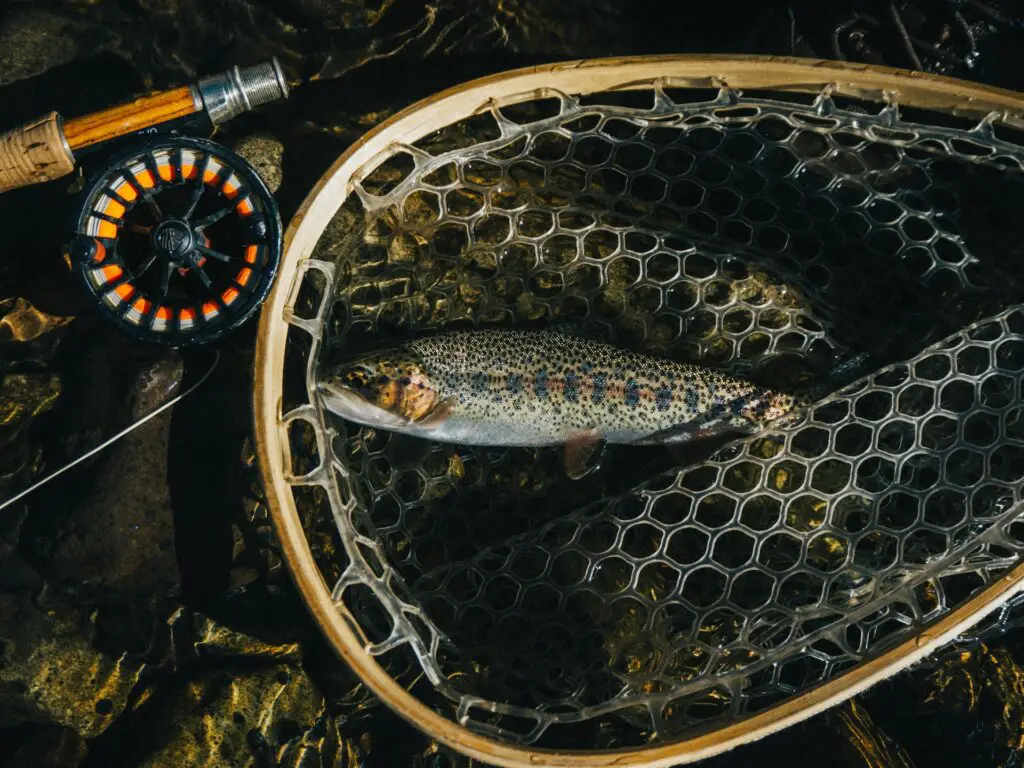
Trout are fascinating fish, as confirmed by an interesting article I have read on the Wild Trout Trust website. It does not matter much if you do not know how to fly fish or you do not have any fly fishing equipment. You can catch trout with whatever you have rigged up – be it a spinning rod, baitcaster, or a mere long stick with a line tied to the end.
Use the following tips and tricks on your next fishing trip, and I guarantee a fun trout fishing experience!
Find Trout Quick & Easy
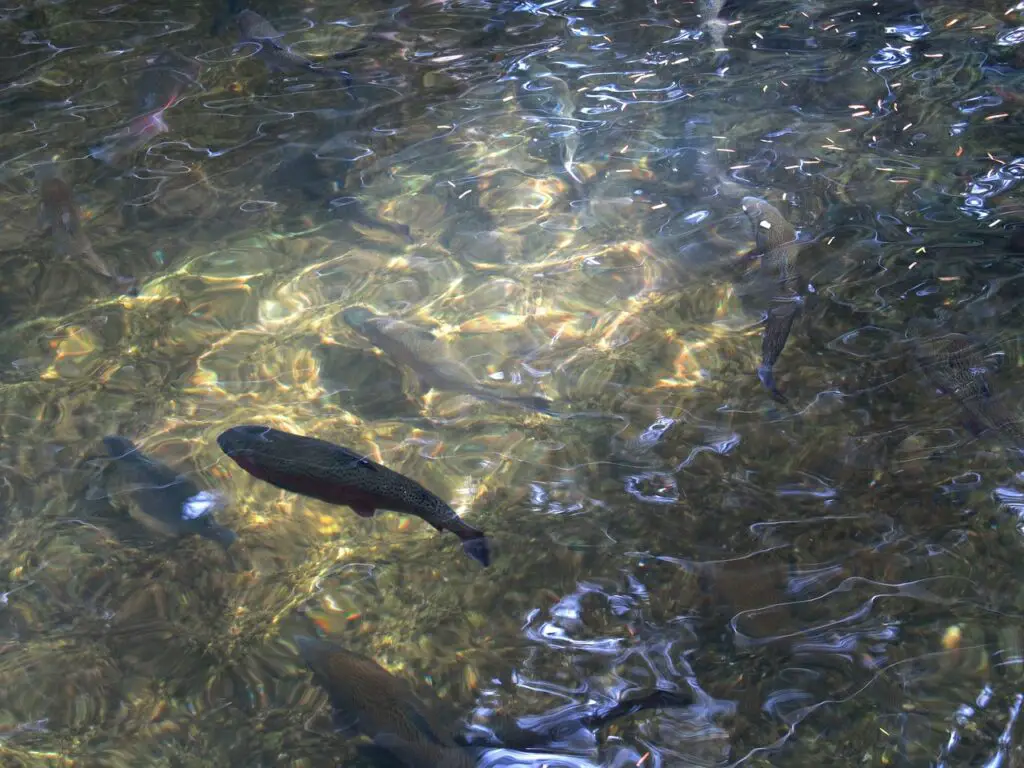
I’ve learned that to catch trout, with or without a fly rod, you must find them first. According to the Indiana Division of Fish and Wildlife’s Animal Information Series, trout are cold-water fish that live in clean waters below 70 degrees Fahrenheit. Here are the best spots to look for these fish:
Calm Water Areas Near Big Water Structures
According to the National Association of Conservation Districts (NACD) nonprofit organization, logs and brush provide escape cover for trout. Hence, search for a water structure, such as a big rock or a large tree trunk. You will notice a calm pool of water just upstream from it. This is the spot you are looking for!
However, do not throw your lure directly into this calm pool. You want to cast it a bit further upstream and let it flow down naturally. In my experience, such a natural presentation is guaranteed to trigger a strike and get you more trout.
White Foam Lines
Find stream and river riffles or fish underneath waterfalls. Why? That is where you’ll find white foam lines! According to an article written by Chris Hunt, the national digital director for Trout Unlimited, foam lines are favorite trout feeding spots due to the extra security they provide. Cast your lure directly into these lines, and you’ll likely catch more fish than ever before. I found that if you work on your accuracy, success will follow!
Dark Holes Near The Shore
In my experience, trout often reside in shallow water near the shore. To find these “bank” trout, you should locate dark, hidden holes close to the shoreline. Approach them cautiously, and drop down a jig – that should trigger some action!
Deep Pools Of Water
As specified by The National Park Service, an agency of the United States federal government within the U.S. Department of the Interior, trout are cold-blooded fish that cannot thrive in warm water. Therefore, during the hot season, they often move further down the water column in search of cold water. I have read that some species, such as rainbow trout, generally prefer roaming the colder water about one to two feet off the bottom.
Therefore, it is wise to target trout in deep pools of water. Many anglers use color fishfinders to pick up trout in deep water and then drop the jig to the appropriate depth. You can try that too.
For more advice on deep water trout fishing in the sea, watch the video below:
Do Not Spook Trout
Trout wait for their next meal to come to them with the current. That is why their eyes are usually set upstream. If you want to approach trout without spooking them, you have to make sure you stay out of their line of sight. The New York State Department of Environmental Conservation, a department of the New York state government, also advises that you should wear camouflage clothing or “natural colors.”
Here is how I think you should do it: Approach them slowly, ensuring you disturb the water as little as possible. Be extra careful if the water is completely calm. Do not cast the shadow over trout as that would frighten them and make them scatter away immediately.
Once you reach your position, stay calm and quiet. Do not throw the line directly on top of the trout. It is much better to cast the bait upstream and let it slowly drift down with the current. It will appear as natural as their usual meal, and they’ll likely grab it without a second thought.
Use Alternative Trout Fishing Techniques
If you want to catch trout without fly fishing, you have to be open-minded and try new fishing techniques, and maybe even alter your fishing style. Here are some suggestions:
The Dead Stick Technique
The dead stick technique is not very popular, but it can be an incredibly effective fly fishing substitute. To try it, you’ll need to get a soft plastic bait or even a live worm. If the water is calm, you can use dry flies too.
I read a funny description of dead sticking on an Ultimate Fishing site which explains that this is when you are doing nothing with your lure or bait. The technique is rather simple: drop your bait into the current and let it float. Ensure you have sufficient line slack to dangle your lure on the water surface.
Jigging
Jigging can be an effective method for trout fishing, and based on a SeaFish.org article, it is environmentally friendly too. To try it, you need a jig – a small round weight that has a hook attached to it. You’ll also need something tasty to attract fish. I usually use some fish guts, corn, salmon eggs, or some other food I have available.
How to jig? Simply lower your jig into to water until you feel it has reached the bottom, and then start jerking it up and down. You can do it at a steady pace or vary the speed as you like – whatever works best in your circumstances. The goal is to imitate an injured baitfish and trigger a strike.
If you are jigging from a boat, try one of the two following methods:
- Jigging the bait up & down
Find a good spot to anchor your boat. Let the boat drift while you jig your bait straight up and down. Keep the line tight so that you can set the hook as soon as you feel the strike.
- Jigging the bait towards you
Cast your bait as far as possible and jig it slowly towards you. Make short pauses between the jigs to let the bait sink deep enough. This method enables you to cover more water when targeting sea or lake trout.
The Split Shot Technique
A split shot technique is one of the best alternatives to fly fishing when you target trout in large water areas or have no success jigging. What do you need for this technique? A light fishing line (up to 10-pound test) and a split-shot weight.
What do you need to do? I suggest you tie the weight about 10 to 12 inches up from your lure. Once you cast the lure, let it sink until it reaches the middle section of the water. Wait patiently until you get a strike – it works for me.
The Bow & Arrow Technique
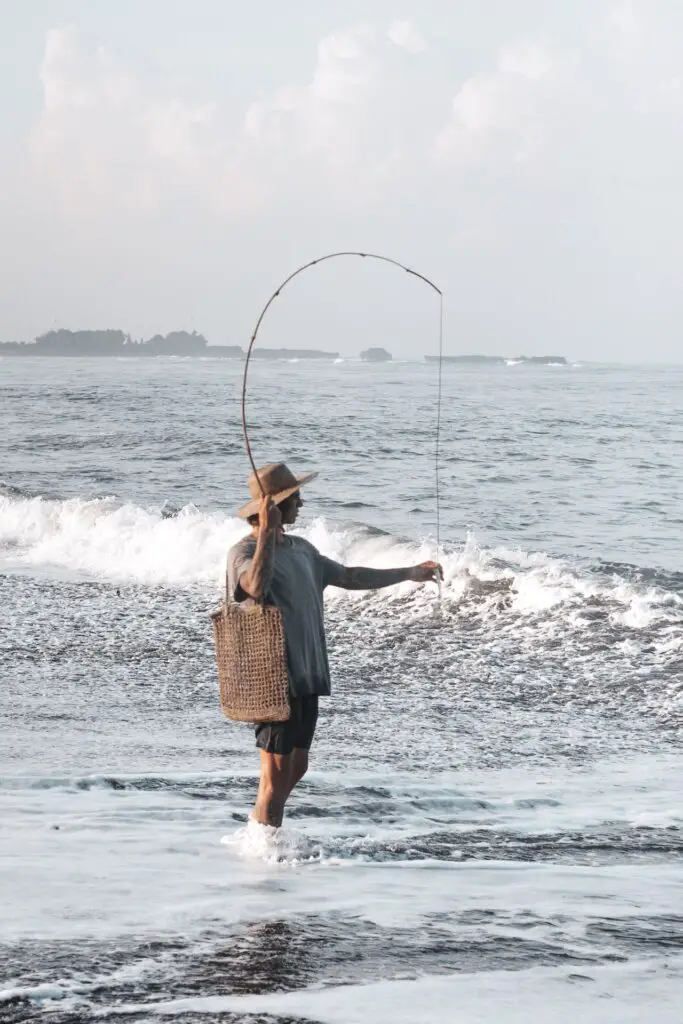
The bow and arrow technique is the most fun alternative to fly fishing. According to Phil Monahan from Orvis News, this technique is reserved for when you are fishing in very tight quarters and you don’t have any room for a back cast. I use it only when there is plenty of debris or brush on the water, and I do not want to get tangled or hooked up.
What do you need? A highly-flexible slow-action rod, a lot of fishing line, and the bait of your choice (you can use a fly too).
Start by taking out enough fishing line to reach your desired destination. Then, close the bail to lock it. Take the hook between the thumb and the index finger of your dominant hand while you hold your rod in your other hand. Pull the hook backward (behind your ear) just as you would pull an arrow on a bow.
Handle the hook carefully. You do not want to hook yourself while throwing it towards your target. If you do everything right, the bait should reach the destination without getting tangled up.
The Egg Roll Method
When other methods fail you, you can try the egg roll method. In the words of Allan Burgess from FishingMag, a New Zealand online magazine for fishing enthusiasts, egg rolling is aimed at drift fishing soft bait fish eggs. All you need are trout or salmon eggs to attract hungry fish and a small weight to keep them at the ideal depth. After all, trout feed on eggs during their spawning season and perceive it as an easy meal.
How does this technique work in practice? Carefully attach the eggs to the hook. They are quite sensitive, so be careful not to pop them as I often do since that would diminish their efficiency. Then, cast your bait and let it drift near the bottom at the speed of the current.
Use Alternative Bait & Lures
You can always use the same flies the fly fishermen use to catch trout – as long as you do not use fly rods, it is not considered fly fishing. To my knowledge, the one that brings in the most fish is the Bead Head Prince Nymph.
If you feel adventurous, ditch the small fly and try out the following alternatives:
Corn
Corn is one of the oldest bait ever used, so why not try it? I like to put a piece of corn on my hook and do some jigging! Sina, an acknowledged eBook writer, suggests using 2 or 3 corn kernels to completely cover the hook.
Alternatively, you can place a piece of corn on your hook and drift it. Use a piece of cork as an indicator to easily reach the desired depth.
Marshmallows
It might sound unusual, but that is the point. The trout you are trying to catch have probably never seen a marshmallow and are likely to be intrigued by it. That might lead to a reaction strike. Be patient – in my experience, marshmallows won’t fall apart and leave your hook empty, so there is no need to hurry.
Silver Spoons
Silver spoons are usually used when targeting bass or pike, but as I have heard from some seasoned fishermen, you can use them for trout fishing, too. Trout are generally small fish, and that means you should use small bait that fits their small mouths. Opt for the tiniest silver spoons you can find.
Worms
According to the Future Fisherman Foundation, worms are one of the best live baits you can use to catch fish, trout included. A good old nightcrawler on your hook can bring you the big trout you are hoping for, but small minnows and mealworms are effective live bait too. Just remember to opt for the smallest worms you can find.
Salmon Eggs
Trout love salmon eggs! You can use both real salmon eggs (if you can get a hold of them) and the fake ones you can buy at any tackle store. You can tie them directly onto your hook or jig – they are effective either way.
Use Small Hooks
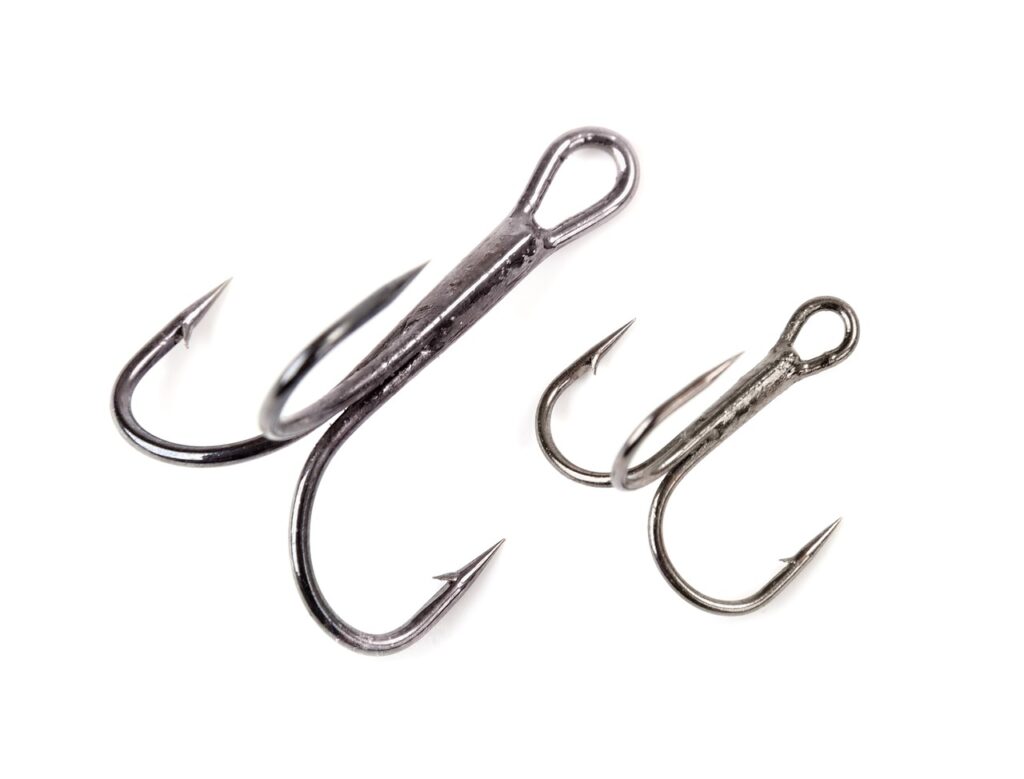
I recently received a piece of worthy advice that when it comes to trout fishing, stick to one rule: the smaller, the better. This goes for choosing your hooks, too, especially when targeting small streams and brooks.
A small hook will not only look more natural and be less likely to spook the fish but also set in more easily. Depending on your preference, choose one of the two following options.
- A size 10 to 14 for treble hook
- A size 8 to 12 for single hook
Either will work with almost any trout bait, but I prefer treble hooks even though they are forbidden by the IGFA International Angling Rules. Whatever hook you choose, ensure it is of decent quality and sharp enough for a fish to get hooked and not take your bait and swim away.
Avoid Setting The Hook Too Hard
When using a spinning rod, be careful not to set the hook too hard, or you may lose your catch. This type of rod is more powerful than a fly rod, and you must act accordingly. Do not yank the bait out of the trout’s mouth! Take my advice and count to five to allow the trout to take it in fully.
Do not make the opposite mistake either. If you wait too long, the trout will nibble up your bait and swim away, leaving you empty-handed. Find the perfect balance! According to Mike Loebl, a professional fly fishing guide, the hook set is the single most important part of catching fish. Flawless hook-set timing might require some time and a few lost fish, but you’ll get there.
Use A Spinning Rod Rather Than a Baitcaster
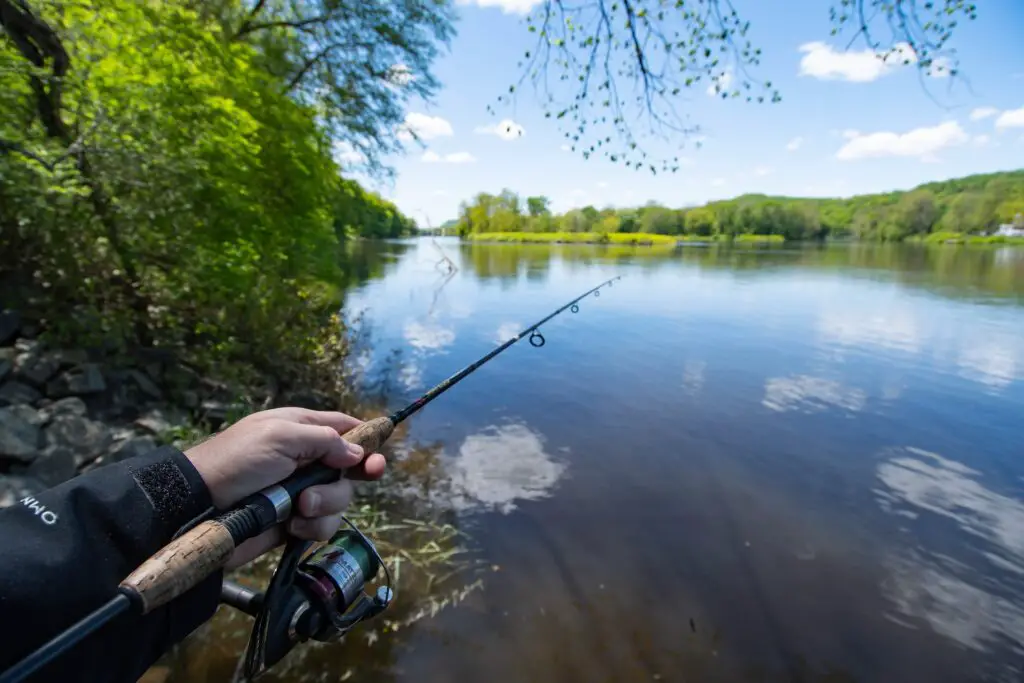
Finding the best alternative for a fly rod can be confusing, especially if you are accustomed to fly fishing. You can switch to either a spinning rod or a baitcaster, but I recommend the former.
As I read in the I FISH NY Beginners’ Guide to Freshwater Fishing issued by the New York State Department of Environmental Conservation,spinning rods make casting lightweight lures and baits easier. Baitcasting rods are bulkier and require more strength and effort. Besides this, spinning rods are affordable, highly versatile (can be used to target other fish, too!), and compatible with most trout bait and lures. They are also beginner-friendly – even kids can use them.
What spinning rod and spinning reel to get for trout fishing?
You should better start with a light-power and fast-action spinning rod suitable for casting very light bait and lures, especially if you are fishing in small streams and brooks. Such a rod will allow your lure to hit the water without disturbing the fish.
It is also less likely to yank the bait out of the trout’s mouth. The best length for trout fishing is between 6′ and 6’5”. I read in an Arkansas Democrat-Gazette article written by Bryan Hendricks that trolling for trout calls for a long, light-action, or medium-light-action, spinning rod.
As far as the spinning reel goes, opt for a 5:1 and 6:1 speed ratio. It is ideal for targeting trout in streams and brooks. If you aim to catch bigger trout in lakes or the sea, think bigger and get yourself a reel with a 7:1 gear ratio.
The following video can help you choose a spinning rod for trout fishing:
Use 6-Pound Test Fluorocarbon Fishing Line
According to the Idaho Department of Fish and Game,4 to 8-pound test monofilament is the best fishing line for trout, especially when still fishing or spinner fishing. I usually opt for the 6-pound test fluoro line. Why?
A six-pound test line is almost invisible in the water since it is very thin and lightweight. You want your rig to appear as natural as possible, especially if you hope to catch trout in clear water. A highly visible line will spook the fish.
Besides, a fluorocarbon line works with both a spinning rod and a baitcaster. Therefore, you can use it in all sorts of fishing applications.
Use The Smallest Setup
We already established that trout are small fish and that trout fishing requires finesse. Therefore, I always opt for the smallest and lightest setup.
If you can choose between several rods or reels, always get the smallest ones. The already-mentioned Idaho Department of Fish and Game also suggests using the ultralight spinning tackle. An ultralight rod is the most sensitive rod to smaller fish such as trout. Ideally, your rod should be under 6’6”, while your reel should be size 1000 or 2000.
Take Advantage Of Large Bodies Of Water
Since you are already using a more powerful fishing rod than a fly rod, take advantage of it and go fishing for bigger trout in large bodies of water (a large river or lake). I often do that! With a spinning rod or baitcasting rod, you do not have to stick to the finesse techniques. They can cast further than a fly rod, so you can use your bass fishing methods to score a trophy trout too.
Watch the video below for some tips on trout fishing in lakes:
Switch Things Up
I never go trout fishing with only one type of lure in my pocket. I want to have an alternative if something is not working at that moment. So, I always bring some corn and a few worms and marshmallows. One of these tasty lures is bound to trigger a strike! I also recommend bringing flies. You do not need a fly rod to throw a fly.
According to the TPWD’s Basic Fly Fishing guide, you should try to match the hatch on the water you are fishing and use flies designed to imitate aquatic insects at different life stages. The same goes for other techniques – the larger selection of bait and lures you have at your disposal, the more likely you are to succeed!
FAQs
Do I need to fly fish for trout?
You do not need to fly fish for trout. There are many alternative fishing techniques and bait and lures anglers use to successfully catch trout. You should try them too!
Can you catch trout with a regular fishing pole?
You can catch trout with a regular fishing pole. It is not true that you must use a fly rod for trout fishing. A spinning or a baitcasting rod will do just fine, too.
Wrapping Up
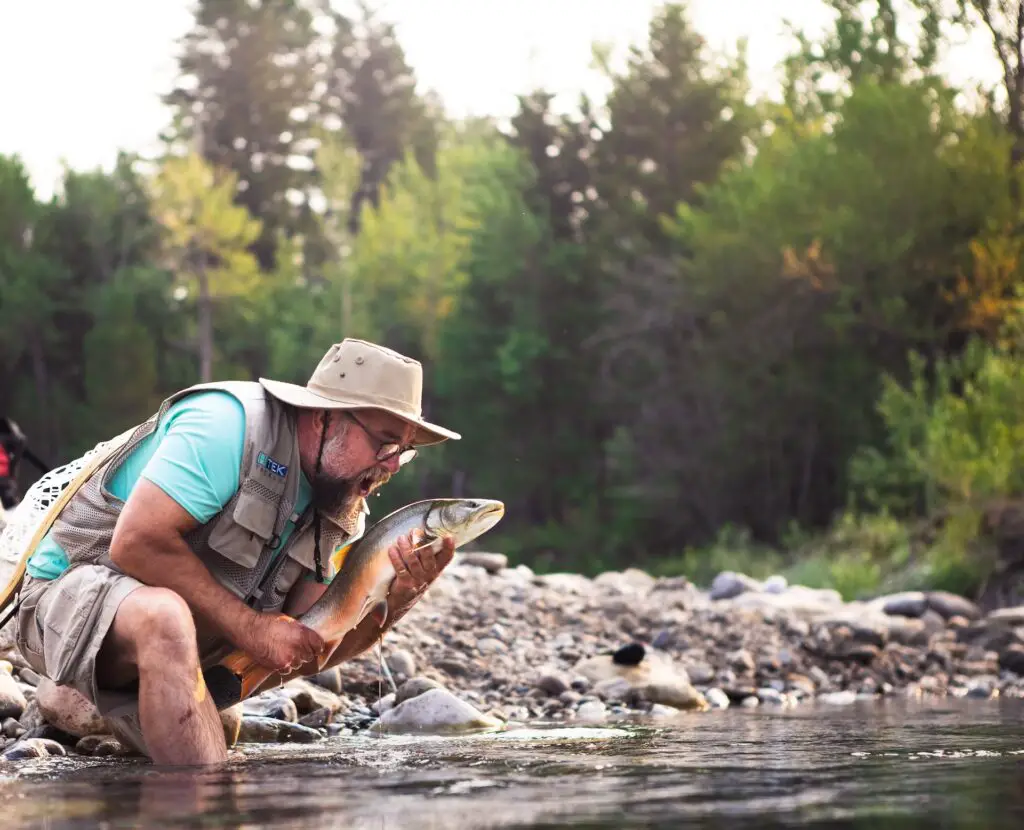
You do not need fly rods or flies to catch trout. There is an array of different fishing techniques and setups which are almost as effective. You should try them out even if you are an expert in fly fishing for trout in streams, rivers, or lakes. It is always fun to experiment!
I’ve tried to include everything I know about catching trout without fly fishing, including tips from pro anglers I have gathered over the years. If you think I have failed to mention something important, leave a comment! Thank you.
